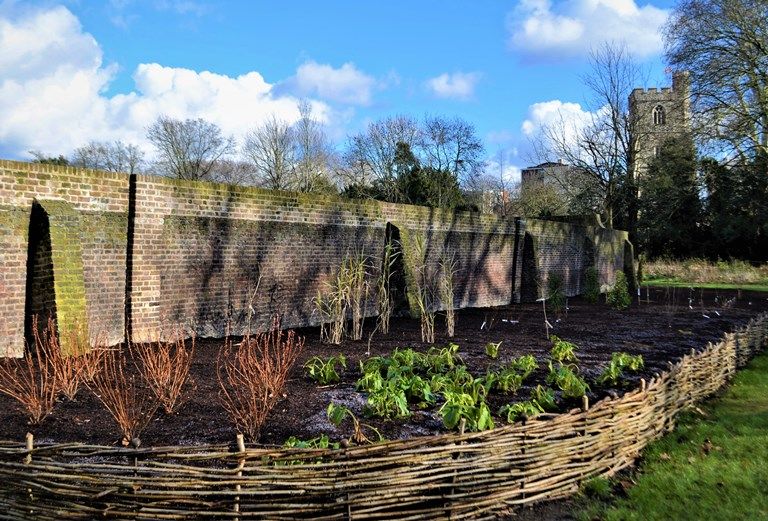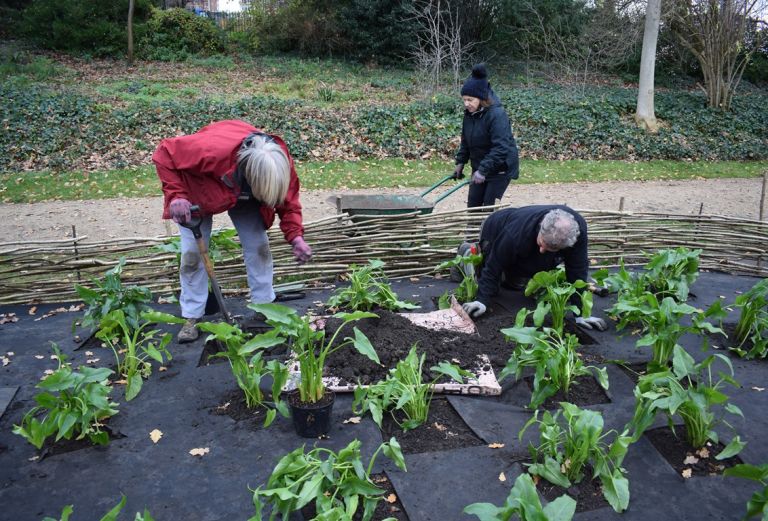
by Lucy Hart, head gardener
We are continuing to plant out the new Bishop Compton beds, which are one of the big features of our restoration project.
Fulham Palace was a very influential garden in the botanic world at the time of Bishop Compton (1675-1713) who had a passion for botany. Back then Compton was receiving shipments of plants and seeds collected by his missionaries from the Caribbean, Africa, India and mostly from Virginia, North America. He would experiment cultivating them in his home at Fulham Palace, in hot houses and within the garden. He was said to have over 1,000 plants growing, including his most important introduction, swamp magnolia Magnolia virginiana, the first magnolia to be cultivated in Europe.
Sadly, none of the original Compton collections exist anymore. The Cultivating Compton borders will reunite Fulham Palace with the species Bishop Compton grew in the late 17th and early 18th centuries, telling the story through a living plant collection. The borders are situated outside the south and east side of the walled garden, beside a new path that has been built to make this area accessible all year round.
Initial research by Lear Associates paved the way and then Dr Mark Spencer, Honorary Curator (Plants) at the Linnean Society of London studied the plants grown by Bishop Compton, in the Hans Sloane Herbarium at the Natural History Museum. Mark has revealed some exciting primary source material of pressed plant specimens that were grown at the Palace during Compton’s residency and this research has informed our planting list.
As head gardener I sourced the plants for the beds from specialist nurseries and other botanic gardens. When complete, the Cultivating Compton beds will include over 80 new species including shrubs, ground cover and 18 trees such as persimmon Diospyros virginiana, nettle tree Celtis australis, and the stunning Judas tree Cercis siliquastrum. The challenge was to make sure the trees selected won’t grow so big as to crowd out the other species or block the important historic views of the site. When selecting the plants, site conditions, aspect and soil were also important to consider, including soil pH. Compton grew the spectacular swamp azalea Rhododendron viscosum which, like all rhododendrons, is acid loving as is the remarkable spice bush, Lindera benzoin and our acidic soil will support both these species. Compton grew many woody shrub species and small trees including some with fabulous autumn leaf colour such as Sassifras albidum, stag’s horn sumach Rhus typhina and cockspur thorn Crataegus crus-gali. Compton’s plant inventory also included herbaceous ground cover and Zantedeschia aethiopica, Canada wild ginger Asarum canandense, maidenhair fern Adiatum pedatum, Dutchman’s breeches Dicentra cucullaria, toadshade Trillium sesille and Virginia bluebells Mertensia virginica to name a few. These will provide beautiful ground cover through the plantings, complementing the taller species and demonstrating Compton’s horticultural diversity.
We are also reintroducing four specimens of the Magnolia virginiana of different maturities and like Compton these will be placed in varying positions, experimenting with their cultivation and monitoring if they prefer a particular aspect.
In December we started planting the beds up and finished a lovely wattle fence built by the gardens team and volunteers to surround the beds. Some species are still to follow and will be out between now and spring but the bedding area is starting to take shape. Landscape fabric was laid over the soil before planting to prevent weed seedlings. The plants were then mulched with a thick layer of pine bark mulch to conserve moisture, block out weeds and set the planting off.
